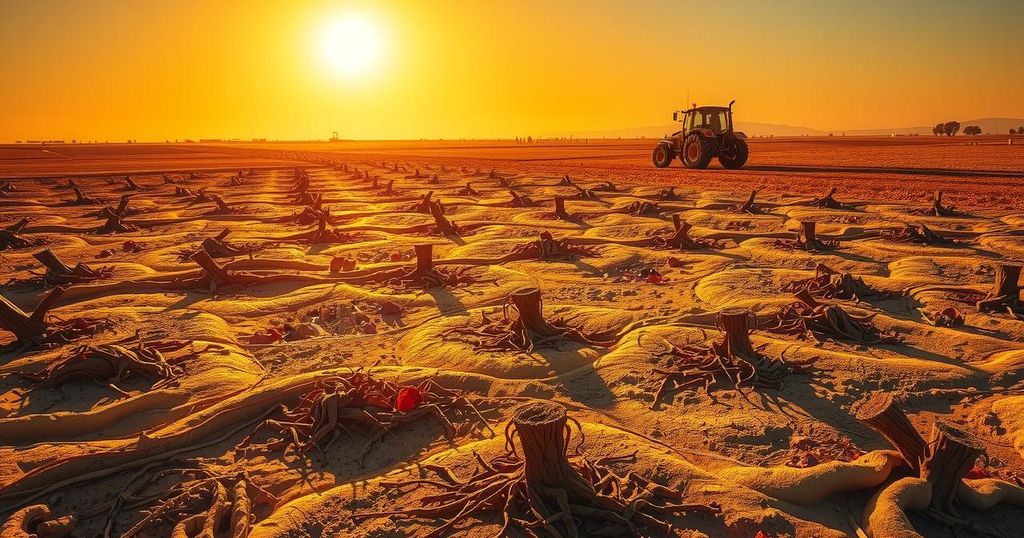India’s Early Heatwave Disrupts Agriculture and Manufacturing Sectors

India’s early summer heatwave poses serious risks for agriculture and manufacturing, disrupting traditional practices and leading to significant drops in sales and crop yields. Business owners and farmers are adapting to these changes, but the long-term implications for the economy and food security are concerning. Urgent action is required to develop strategies for mitigating climate impacts and safeguarding India’s agrarian economy.
As India experiences an early onset of summer, factories and farms are faced with significant challenges. Nitin Goel, a clothing manufacturer from Ludhiana, highlights how his business is struggling due to a shift from winter apparel to summer clothing, resulting in a drastic sales drop. Goel reported, “We’ve had to start making t-shirts instead of sweaters as the winter is getting shorter with each passing year.”
Data from the Indian Meteorological Department indicates that February 2023 was the hottest in 125 years, with most regions experiencing above-normal temperatures. This trend is expected to continue into May, raising concerns over how rapid weather changes are disrupting traditional agricultural and business practices across the nation.
The shift in weather has compelled Goel’s company to adapt its business model, with major retailers now using a “sale or return” model on deliveries, offloading risks onto manufacturers. Goel noted that smaller businesses in his region have faced closures due to these economic pressures.
In Devgad, farmers like Vidyadhar Joshi report severe losses in Alphonso mango production, forecasting only about 30% of normal yields this year. Joshi mentioned the increased need for irrigation and fertilizer, forcing him to send back laborers due to insufficient work, signifying broader agricultural disruption.
Additional crops, including winter staples like wheat and chickpea, are also under threat from the heat, causing skepticism among experts regarding agricultural yields. Abhishek Jain from the Council on Energy, Environment and Water shared concerns that 2022’s heatwaves had previously caused yield declines of 15-25%.
India’s agricultural future looks precarious, especially if prolonged heatwaves impede harvests, potentially leading to increased reliance on costly imports. Water availability issues are also emerging; reservoir capacities in northern India have dipped to 28%, raising alarms about future crop viability and dairy production.
Madan Sabnavis, Chief Economist for Bank of Baroda, warned that climate change could substantially impact inflation rates and overall economic growth. Recent minor reductions in food prices have been noted, but any setbacks in agriculture could counteract economic recovery efforts after a significant downturn experienced last year.
To mitigate these risks, think tanks propose strategies including improved weather forecasting, agricultural insurance, and revised cropping calendars that consider climate trends. With a majority of India’s economy dependent on agriculture, systematic changes must be prioritized to safeguard against climate change.
Climate Transparency predicts India could suffer a $159 billion income loss due to extreme heat-related labor capacity reduction by 2021, which would significantly affect GDP. Without decisive action, the impact of recurrent heatwaves may threaten both economic prosperity and public health in the country.
The early heatwave in India poses severe risks to both agricultural output and factory production, necessitating significant adaptation strategies. With unprecedented temperature averages leading to dwindling crop yields and altered business models, India must urgently implement changes to sustain its heavily agriculture-dependent economy. This includes better resource management and innovative agricultural practices to counteract the adverse effects of climate change, ensuring economic stability and food security.
Original Source: www.bbc.com







